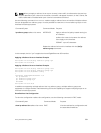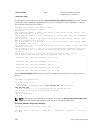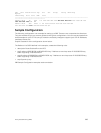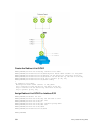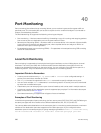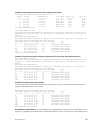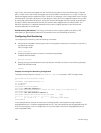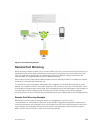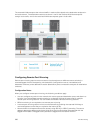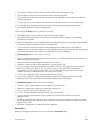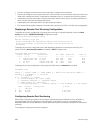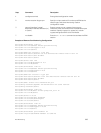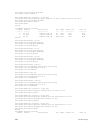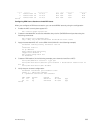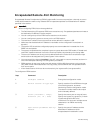
Figure 97. Port Monitoring Example
Remote Port Mirroring
While local port monitoring allows you to monitor traffic from one or more source ports by directing it to
a destination port on the same switch/router, remote port mirroring allows you to monitor Layer 2 and
Layer 3 ingress and/or egress traffic on multiple source ports on different switches and forward the
mirrored traffic to multiple destination ports on different switches.
Remote port mirroring helps network administrators monitor and analyze traffic to troubleshoot network
problems in a time-saving and efficient way.
In a remote-port mirroring session, monitored traffic is tagged with a VLAN ID and switched on a user-
defined, non-routable L2 VLAN. The VLAN is reserved in the network to carry only mirrored traffic, which
is forwarded on all egress ports of the VLAN. Each intermediate switch that participates in the transport of
mirrored traffic must be configured with the reserved L2 VLAN. Remote port monitoring supports
mirroring sessions in which multiple source and destination ports are distributed across multiple switches
Remote Port Mirroring Example
Remote port mirroring uses the analyzers shown in the aggregation network in Site A.
The VLAN traffic on monitored links from the access network is tagged and assigned to a dedicated L2
VLAN. Monitored links are configured in two source sessions shown with orange and green circles. Each
source session uses a separate reserved VLAN to transmit mirrored packets (mirrored source-session
traffic is shown with an orange or green circle with a blue border).
Port Monitoring
689



